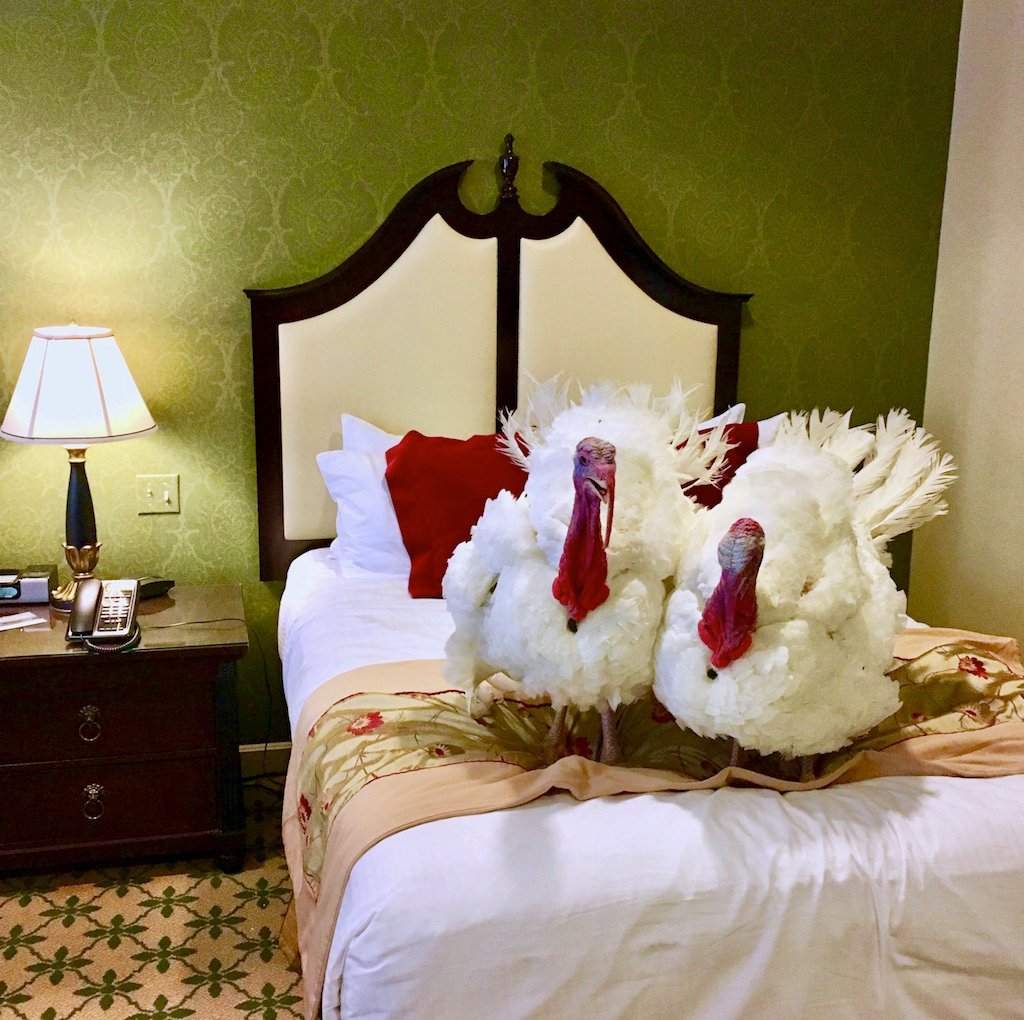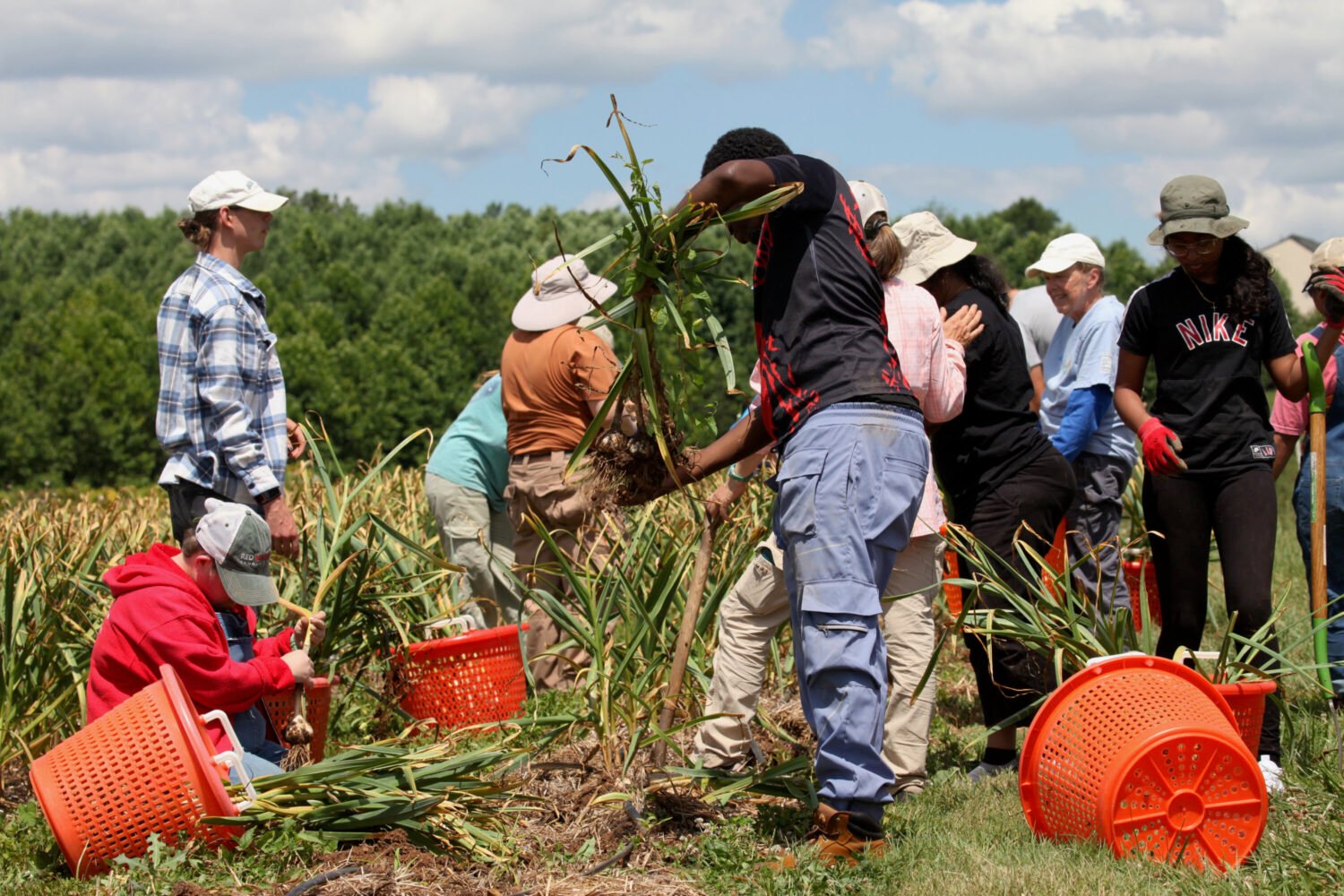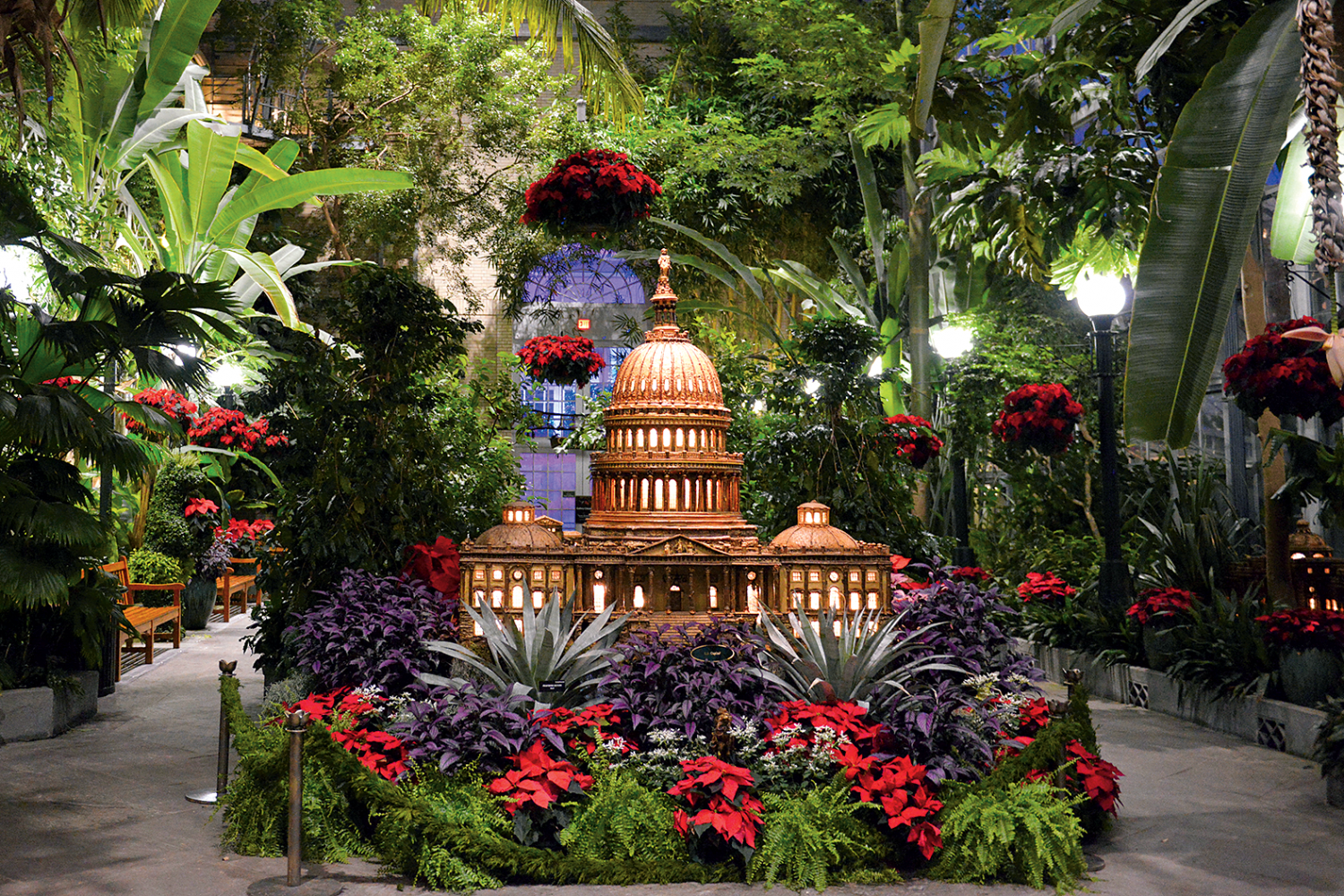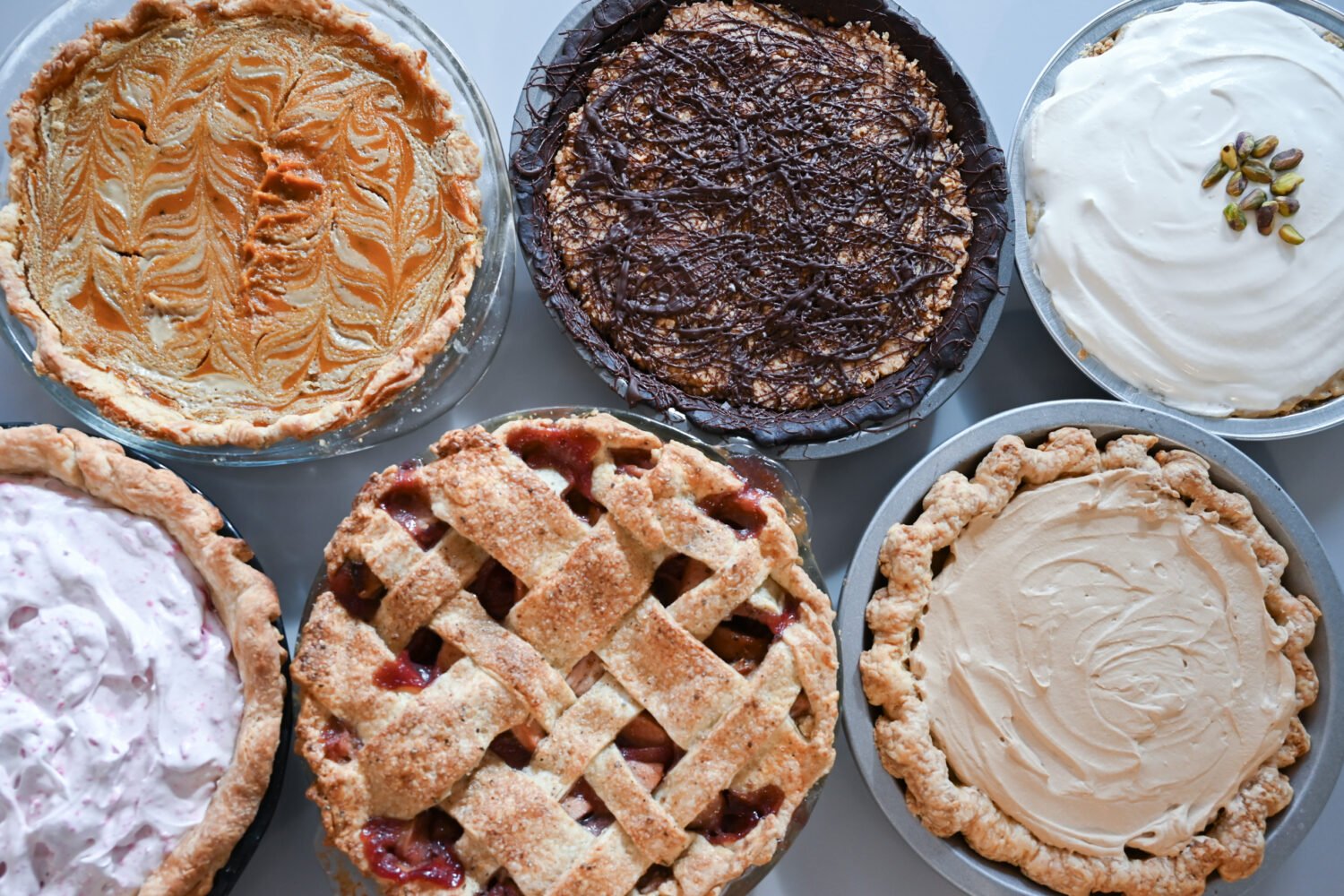If you’ve ever wondered about the pardoning turkeys—those darling birds that flap and fawn around the White House each November before receiving quasi-official clemency from the leader of the free world—then the person to ask is Joel Brandenberger, the CEO of the National Turkey Federation. Based in DC, NTF is the turkey industry’s trade association, which has provided the White House with its birds since 1947.
This Thanksgiving will be Brandenberger’s 33rd with NTF—and it’s also his last, since he plans to retire in June. We called him for an exit interview to find out what it’s like to be a turkey lobbyist during the holiday season, and what turkey lobbyists do during the other 10 months of the year.
You’ve now attended 32 turkey pardons. Do you have any good stories?
Well, there are two. I almost can’t even begin to describe the first one, so I’ll just send you to YouTube and you can see it for yourself—search “handler cries fowl.” It’s what happened to me at my first White House pardoning. Spoiler alert: I drop the bird in a really spectacular way. And when you see it, you will think it’s a miracle that I’m still at NTF to talk to you today. It’s why no one from NTF is ever allowed to lift the turkey and put it up on the table again.
Incredible. What’s the other one?
The other one was in 2006, during Bush 43. [Before the ceremony] we like to let the [main] bird out of its cage to get settled. We were told that we could go ahead and let it into the Rose Garden, but we had to be very quiet because there was a national security meeting going on in the Oval Office. As we were bringing the bird over, I saw somebody walking Barney and Beazley, President Bush’s two dogs. Suddenly, I heard this loud barking and I turned around to see that Barney and Beazley had gotten away from their handler.
Oh, no.
Yeah. They made a beeline for the turkeys. Whoever the handler was got a hold of Beazley I think it was, but Barney was just looking at that turkey. And the bird’s flapping its wings, and chairs are coming over, and I’m just keeping an eye on that bird. I figure as long as no dog comes into my view, we’re okay. And suddenly I heard this whistle from behind me and a voice yelled, “Barney!” I turned around, and the President had to leave the national security meeting and come collect his dog.
Oh, no!
The woman who was our contact at the White House was just mortified. But her boss walked over and said, “trust me, it seems horrifying, but before the day’s out, you’ll be laughing at it.” And the President could see the humor in it. Even if it might not have seemed funny to him in the moment, he made a couple of jokes about it when he came out for the event.
Besides attending turkey pardons, what do you do as the CEO of the National Turkey Federation?
So, obviously, one of our biggest functions is to represent the industry in Washington with the regulatory agencies. That’s a huge part of what we do. And communications—both promoting turkey products and making sure people understand the [facts] about turkey products.
Yeah, I saw that you’re trying to make turkey more popular as a barbecue meat.
In some parts of the country, turkey has always been a staple of barbecue restaurants, but not in others. So since 2018, we’ve been doing [a campaign] called “Turkey Smoke,” which is trying to highlight how turkey can be used in the grilling space. We also sponsor the turkey judging at a number of barbecue competitions around the country, and we have a partnership with the Kansas City Chiefs radio network for a “tailgate with turkey” campaign. We’re seeing some benefit. Someone who tabulates these things indicated that the turkey offerings on barbecue restaurant menus seem to have increased over the last couple of years. So that’s pretty gratifying.
Each year, NTF provides the turkey pardon birds. How are they selected?
Whoever our elected chairman is has the responsibility of raising the turkey. Typically, the chairman will have a special barn set aside to raise them, one that’s a little bit smaller than the normal barn. Starting in late June or early July, they’ll select 30 or 40 birds from a regularly hatched flock. At one day old, they’ll take these polts—which is the term for baby turkeys—and place them in the special barn, and the birds will be raised separately.
Almost everything about how they’re raised is identical to the commercial turkeys that we all enjoy at Thanksgiving—the only thing that’s different is that they get increased human interaction. So someone’s in the barn more frequently with them when they’re little, handling and petting them. They’ll play music and crowd noises for them. It’s all part of socializing them so they’re not surprised when they get to the Rose Garden.
Yeah, they have to have their media training.
That’s right, so that the music of the band won’t startle them, or the people milling around. Each chairman has a different way of going about it, but it’s all about increasing their socialization and their familiarity with the sounds that they’re going to hear.
As it gets closer to the big day, usually you’ll find the chairman has his eye on a handful of the birds. Then, a couple of days before they need to leave for Washington, the chairman will pick two. These turkeys are pretty much always driven to Washington. Usually they’ll rent a cargo van where you can set up a makeshift area in the back to restrict the birds, but they’re not caged or anything. They usually arrive a couple of days ahead of the event, and they’ve been staying for a number of years now at the Willard Hotel.
What’s that like?
They get the red carpet treatment. They have their own little suite up there. When we’re with them, they get the run of the suite. But when they’re on their own, we close off a smaller area where we put shavings down for them.
A longtime goal for NTF has been encouraging turkey consumption during non-holiday times. Can you tell me about that?
There was a regulatory decision in the late ‘70s that you could apply the name “turkey” before bacon, or ham, or salami, or whatever—as long as it came from a similar part of the animal. It led to an explosion of turkey consumption in the ‘80s. [Simultaneously,] the country went through a health-and-fitness surge, so turkey was well-positioned to take advantage of that. There was a significant growth spurt in consumption through the ‘80s and into the early ‘90s. It’s leveled off, but you know, that’s okay. We held onto the markets that we gained during that period.
And now turkey consumption is more evenly spread around the year?
Yeah, into the 1970s, about half of all turkey consumed in the US was in the form of a whole bird during the fourth quarter of the year. Now it’s probably less than a third. Consumption at Thanksgiving and Christmas hasn’t gone down—it’s still the same for the holiday season, a very steady 40 million turkeys or so at Thanksgiving, and another 20 to 25 million at Christmas. But turkey consumption exploded in other markets, ground turkey and deli products being probably the two biggest drivers of that.
What do you typically do with Thanksgiving leftovers?
I’ve got two things that I love to do right after Thanksgiving. I make really good turkey enchiladas with a mixture of white and dark meat. That’s the Texan in me. But my paternal grandmother was from Louisiana and she left behind a wicked gumbo recipe. So that’s the other thing I do after the holidays is a turkey and andouille sausage gumbo.
Outside of the holidays, how often do you eat turkey?
Um, in an average week, probably three to four times as the main dish. And I’m hard pressed to remember the last time I ordered a sandwich that wasn’t turkey.
How do you prepare it?
I’ve gotten my wife and her family hooked on turkey burgers, so we do that a lot. We’ve also started grilling more [turkey]. Oh, another thing I do is turkey quesadillas. It’s a great product to use in quesadillas.
Once you retire from NTF, will you keep eating turkey?
Oh, absolutely. I’ll continue to eat it a lot.


















